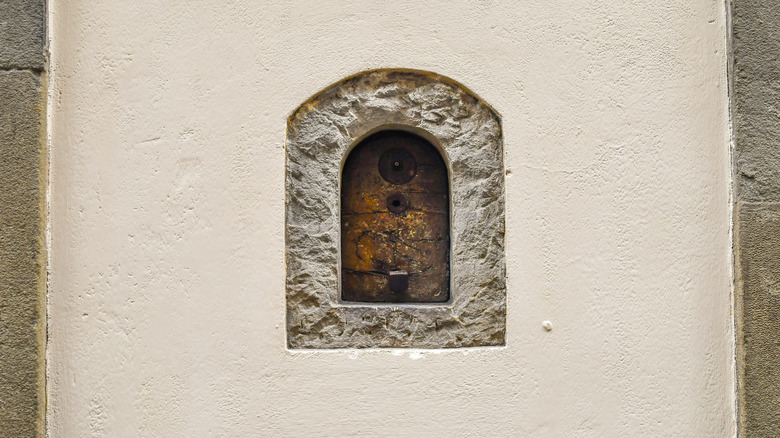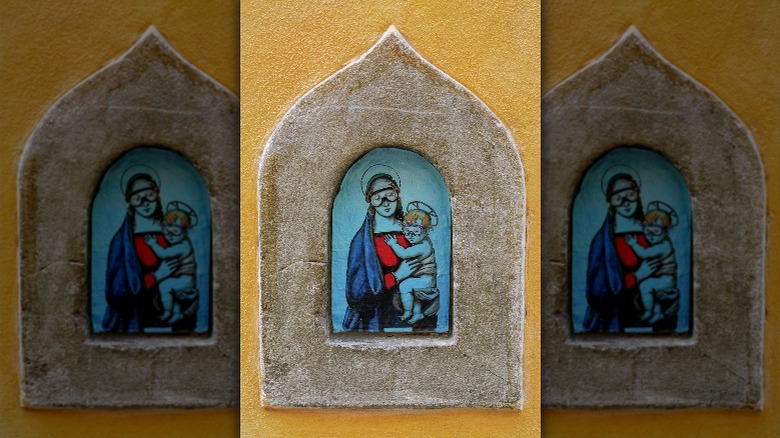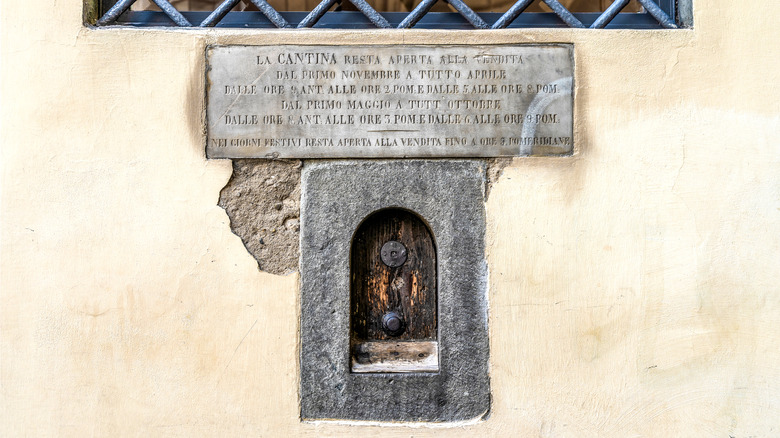Italian Wine Windows Were Once A Defense Line Against The Plague
There's no denying that pandemics throughout history have been tragic, but one helpful way to deal with this is by looking for silver linings. Innovation and introspection are two significant upsides, but another one is the revitalization of history. The recent requirement to social distance, for example, renewed interest in Italian wine windows — a truly fascinating aspect of culinary tradition.
People already know that the Black Death struck Europe during the 14th century – entering via Italy — but not all realize the bubonic plague subsequently afflicted the Old World for several centuries (and persists, to a lesser extent, into the modern day). In the 1600s, the Black Death surged yet again in Italy. Its northern and central regions, particularly Tuscany, were beset explicitly around 1630, losing about 25% of its population (up to 50% in some cities) — per the Encyclopedia Britannica.
Even back then, the need for social distancing was vaguely understood. However, folks still craved Italian wine, sometimes viewing it as a medicinal replacement for unsafe drinking water. So, winemakers devised a way to sell vino with zero contact.
Wine windows were a Renaissance invention
While some examples might date back to the Middle Ages, wine windows were mainly constructed between the 16th and 19th centuries. They caught on during the 1500s as a way for noble families to sell their extra wine directly to the working class without getting taxed. That urban population could simply knock on a wooden hatch, have their flask filled, and pay before continuing onward (rather than visiting a drinking tavern).
Wine windows are exclusive to the Tuscany region. Around 150 of the roughly 250-total wine windows — or "buchette del vino" in Italian — exist in the region's capital city of Florence (via NPR). That's approximately one window for every city block. Impressively, there seems to be consistency regarding dimensions; windows feature curved arches and measure eight inches wide by twelve inches high.
When the Italian Plague of 1630 arrived, wine sellers stopped accepting payment by hand and would collect it with a metal pallet instead. Metal tubes were then extended through windows to dispense wine and vinegar-disinfected coins. Other foods also began to be sold through the windows to avoid contact. As pestilence waned, though, that purpose faded. Even so, why did this practice disappear altogether?
Buchette del vino are experiencing a renaissance
In the early 1900s, laws regarding wine sales began to change, rendering these windows obsolete. Then, a flood circa 1966 destroyed many of the wooden ones. Several noble residences have also been turned into apartment complexes, so their buchette del vino have been destroyed or repurposed as fixtures. Those still around are often subjected to vandalism since their small frames form convenient canvases for graffiti artists.
Recently, however, Italian wine windows underwent a resurgence. Even pre-pandemic, in 2019, one Florentine bistro put its wine window back into use for vino itself. That same year, a photographer captured images of about 140 buchette del vino in a book titled "Wine Doors of Florence," which explored noble aesthetics.
When plague again entered Europe through Italy, and the coronavirus led to quarantines, folks turned to zero-contact pickup for Italian cuisine. A Florentine ice cream parlor reopened its window, as well, to serve gelato. Others followed suit, and soon, wine windows became cocktail, coffee, and sandwich windows, too.
The Wine Window Association was also recently formed to advocate for preserving these culturally significant artifacts. Buchette del vino currently enjoys protected status, but the goal is to add plaques to them to increase public appreciation. Pandemics will always be tragic, but Italian wine windows are another example of how humanity perseveres with food through the bad times, which is worth reflecting on.


